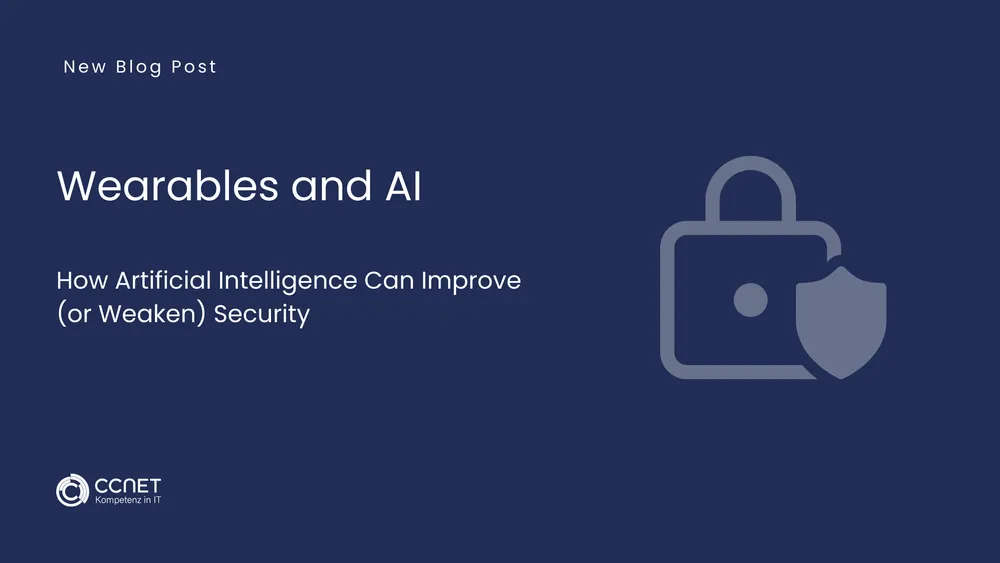
CCNet
Jun 25, 2025 • 2 min read

Wearable Security: Best Practices for Developers and Manufacturers
With the growing popularity of health wearables, the need for robust IT security in these devices is becoming increasingly urgent. Sensitive health data, permanent connectivity, and integration into cloud platforms make wearables attractive targets for cyberattacks. To minimize these risks, manufacturers and developers must consider IT security from the outset—security by design. This article outlines best practices for the secure development of wearables.
1. Why Is Security by Design Important for Wearables?
Wearables often operate in safety-critical contexts and process highly sensitive data. Unlike traditional computers or smartphones, users rarely have control over the inner workings of these devices. Therefore, the responsibility lies heavily with manufacturers to ensure that:
- Data is collected, processed, and stored securely.
- Interfaces (e.g., Bluetooth, Wi-Fi, USB) are protected.
- Updates and security patches are regularly provided.
- Privacy requirements (such as GDPR) are met.
2. Secure Architecture and Software Development
a) Threat Modeling
Before developing a wearable, potential threats and attack vectors should be analyzed. Threat modeling helps identify weak points in the architecture early and take appropriate countermeasures.
b) Secure Coding Practices
Developers should follow secure coding standards (e.g., OWASP guidelines) to prevent vulnerabilities such as buffer overflows, injection attacks, or logic errors.
c) Use of Trusted Components
Only libraries and modules that have been security-tested and are regularly maintained should be integrated.
3. Secure Data Handling and Storage
- Encryption: All personal and health-related data must be encrypted—both in storage and in transit.
- Data Minimization: Only data that is absolutely necessary should be collected and stored.
- Access Controls: Only authorized persons or systems should be able to access sensitive data.
4. Authentication and Authorization
Wearables should implement strong authentication methods—preferably multi-factor authentication (MFA). Authorization controls should ensure that only legitimate users and applications have access to device functions.
5. Update and Patch Management
Security vulnerabilities must be addressed promptly. Manufacturers should:
- Provide regular updates.
- Allow remote updates (over-the-air).
- Inform users transparently about security fixes.
6. Privacy by Design and Compliance
Privacy must be integrated into the development process from the very beginning. This includes:
- Transparent privacy policies
- Opt-in for data sharing
- User rights such as data deletion and export
- Compliance with regulations like GDPR and HIPAA
Conclusion: Security as a Core Feature
Security and privacy are not optional features in health wearables—they are essential. Only when manufacturers and developers integrate security into the core of their products can trust, legal compliance, and data protection be guaranteed. A secure wearable is not only more trustworthy—it is also more competitive.
In the next article, we will explore the topic:
“How Can Users Protect Themselves? Practical Tips for Using Health Wearables.”


